
Travelling from Sulawesi to Halmahera on the final leg of the tour I recently led gave us the opportunity to see a whole load more new birds with Halmahera being home to many endemic species; in fact it was like starting a completely new tour and the anticipation of the new habitats and new birds gave us a whole new wave of excitement and energy.
While Sulawesi had provided us with some really great birds, birds had been sparsely distributed but in Halmahera our experience was that there was a far greater abundance of birdlife even if the forests were under pressure and bird trappers operate there. With an abundance of parrots, frequent sightings of hornbills and pigeons/doves as well as a couple of stunning target birds we all agreed that many of the best birds of the trip were seen on our Halmahera section.
Most certainly one of the stars of birding on Halmahera was Blyth’s Hornbill. Seeing hornbills is always a highlight of any birding trip and I have never been anywhere before where a large species of hornbill is as common as Blyth’s Hornbill is on Halmahera. Even when traveling between sites, making roadside birding stops, we saw these magnificent birds perched on large trees or in flight crossing valleys; either way they were a fantastic sight. I have been to locations elsewhere in Asia where smaller hornbills, such as Oriental Pied Hornbill, are common but for Blyth’s Hornbill to be one of the most frequent sightings of our stay was quite a surprise for the whole group. We were treated to excellent views on every day birding on this island.
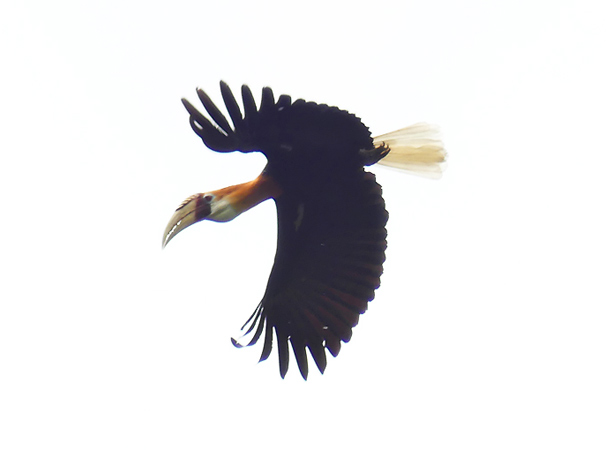
Male Blyth’s Hornbill moments after take-off
Under normal circumstances Blyth’s Hornbill would have been a contender for bird of the trip but given the quality of several other birds we saw here it was never in the running. On our first morning we got up early to be on site at sunrise at a Wallace’s Standarwing lek, somehow negotiating the steep mud-slide that masqueraded as a trail safely. This bizarre Bird-of-Paradise doesn’t look much in the field guide or indeed when it is not screaming for a female but on its lekking tree it was quite amazing, eliciting more than a few expletives of surprise and delight from the group as we watched it wave its “standards” around and crane its neck to squawk while at the same time fanning out its bright green chest feathers, distorting its shape and size in a very impressive and freaky display. Due to the early hour the light was ample for a wonderful 20 minute display from this showstopper but the camera lens did not like the conditions at all and the best I managed was this rather feeble effort that does not capture the essence of what we witnessed at all.
That was going to be hard to be beat. Or was it? We found ourselves, just a little over an hour later, along a forest trail attempting to lure in an Ivory-breasted Pitta. Ten people, a narrow forest trail and a Pitta? Hmmm, it did not seem hopeful but in the meantime we were able to take in a Halmahera Hanging Parrot and another “wow” bird, a female Eclectus Parrot which had everyone reassessing their bird of the trip vote. After enjoying these two suddenly the Pitta called very nearby and a few steps along the trail we got our first view of this stunner. Well, we knew it was big for a Pitta but wow, this was a monster! Over the course of the next half an hour we were treated to many views of this jewel of the forest as a pair of Ivory-breasted Pittas repeatedly bounced around along the trail and flew around us, the whirring of the wing beats being reminiscent of a pigeon.
While Sulawesi had been great for Kingfishers, Halmahera had a few of its own to get us excited. Stopping off at a stony beach next to patch of mangroves eventually revealed a couple of wonderful Beach Kingfishers, as well as a Sacred Kingfisher and a pair of Moustached Treeswifts, while along the forest edge we found a few Blue-and-white Kingfishers and after very much persistence we got great views of a pair of Sombre Kingfishers – hard work.
This was great but the one we all craved was Common Paradise Kingfisher. Our time to find this one began to run out and with the rain decreasing the amount of birding time we had, some people started to give up on it. However, Royke did not and in a display of possibly the most persistent efforts ever seen in the field he eventually found a very obliging Common Paradise Kingfisher for everyone to marvel at.
While these were some of the undoubted highlights there were lots of other superb birds to be seen with Moluccan (Black-chinned) Whistler, Rufous-bellied Triller, Shining Monarch (Flycatcher), White-naped Monarch, Moluccan Cuckooshrike and the superbly-named Goliath Coucal all very memorable birds.
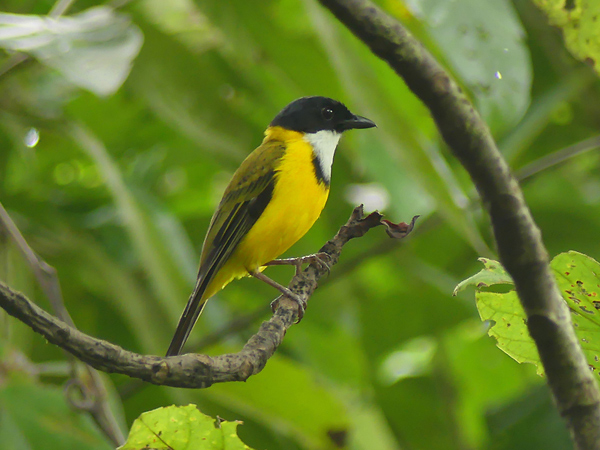
Moluccan (Black-chinned) Whistler
There was an impressive cast of Pigeons too with Cinnamon-bellied Imperial Pigeon, Moluccan (Spectacled) Imperial Pigeon, Blue-capped Fruit Dove, famale Superb Fruit Dove, Grey-headed Fruit Dove and Sultan’s Cuckoo Dove. Parrots were also well-represented and extremely colourful too with the giant Great-billed Parrot, numerous Eclectus Parrots, Red-flanked Lorikeet, Violet-necked Lorikeet, Umbrella (White) Cockatoo, a superb male Moluccan King Parrot and charming Chattering Lory.
We did pretty well for endemic species and even though the Invisible Rail remained invisible we started to find it hard to find more new birds, just look at the excitement the rather drab Dusky Myzomela caused when we found some.
Halmahera certainly gave us some great views of some great birds and a return trip would certainly be on the cards to spend more time with some of these species and although we did see Moluccan Owlet-Nightjar, night birding was a washout due to the weather, so there are some of those to catch up with.
For anyone who has visited Australia there was a very familiar bird in Halmahera which makes the most incredible nests, a small cup perched precariously upon overhead wires, and as someone pointed out it is one of the few birds with a proper name – Willie Wagtail – nice to meet you William! He even has his own theme tune (see 1.03.25 on this video - Dot & The Kangaroo), what’s not to like about this bird?


 October 1st, 2017
October 1st, 2017  Nick
Nick 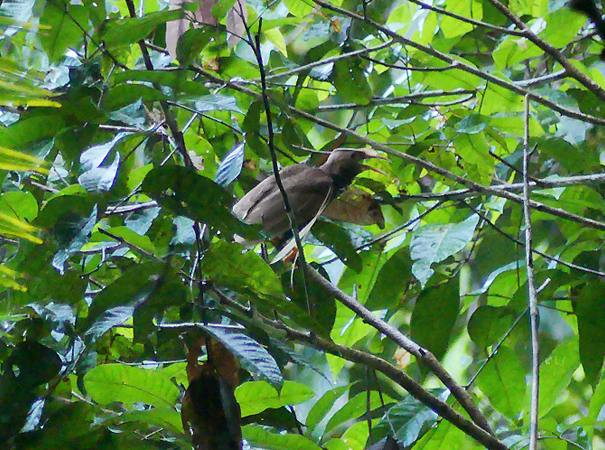
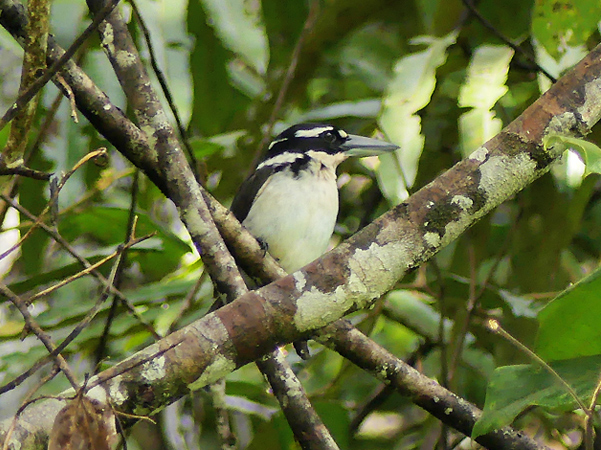


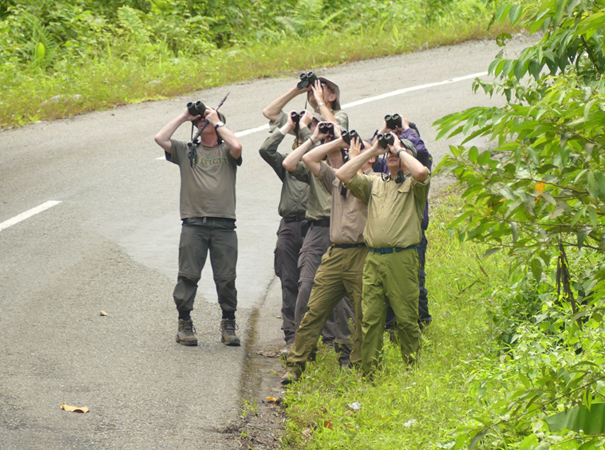
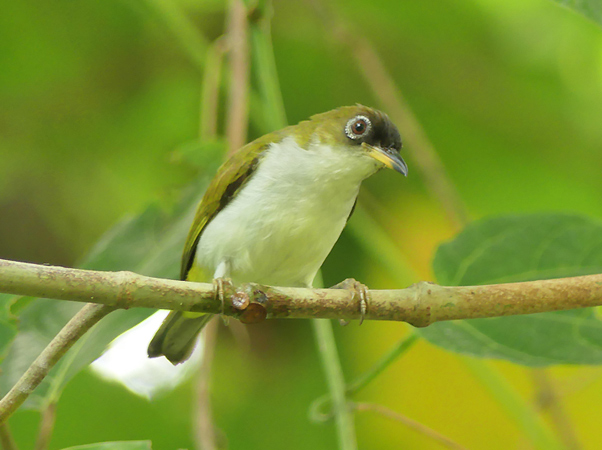
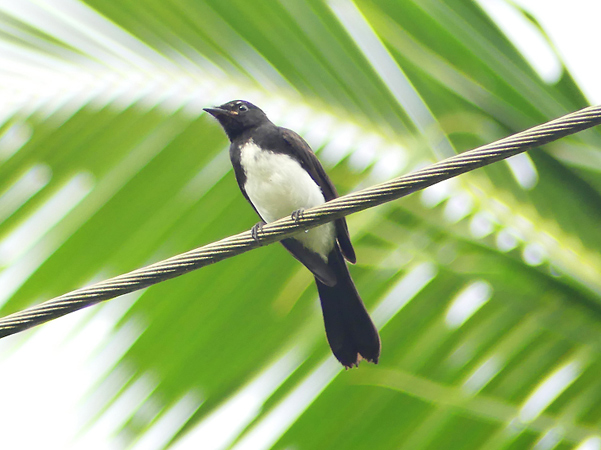
 Posted in
Posted in  Tags:
Tags: 










